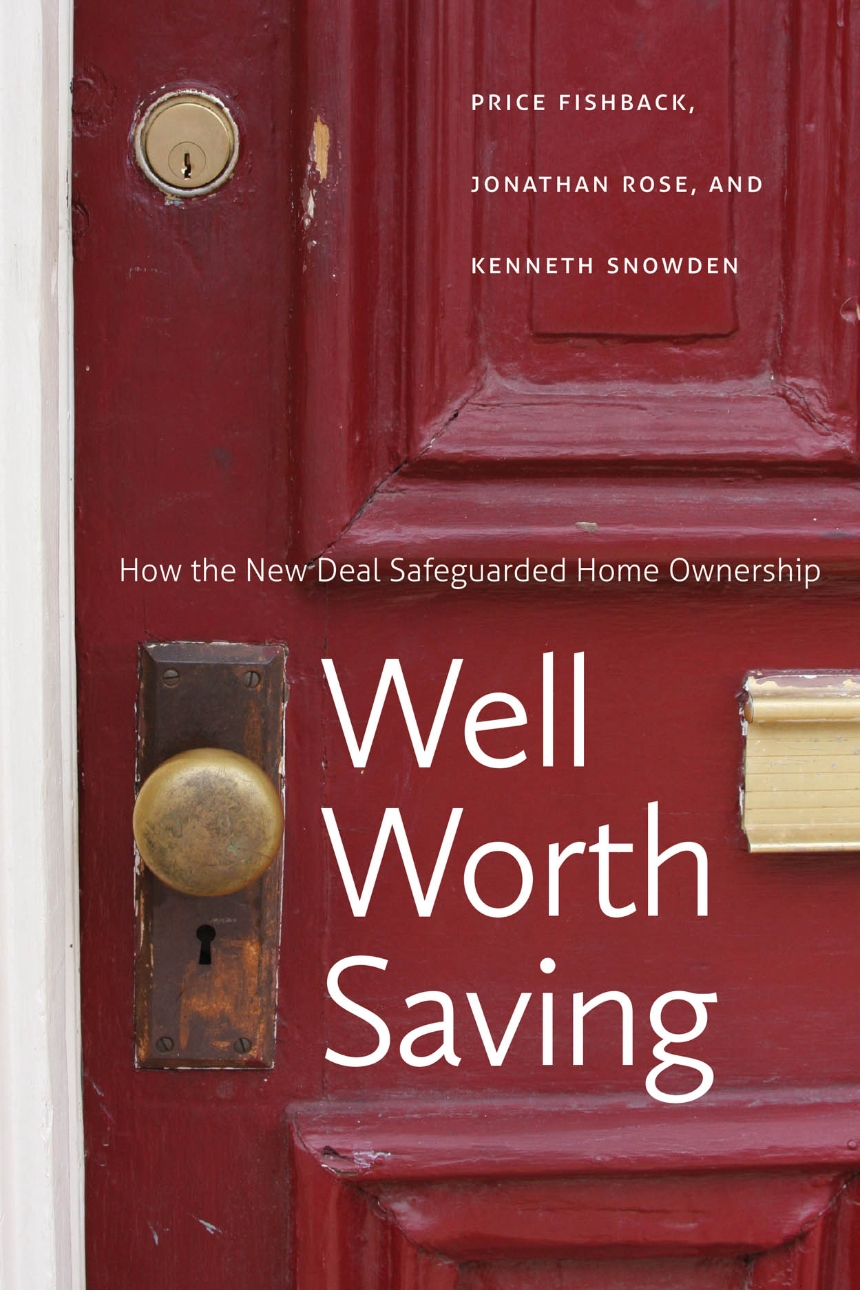Well Worth Saving
How the New Deal Safeguarded Home Ownership
The urgent demand for housing after World War I fueled a boom in residential construction that led to historic peaks in home ownership. Foreclosures at the time were rare, and when they did happen, lenders could quickly recoup their losses by selling into a strong market. But no mortgage system is equipped to deal with credit problems on the scale of the Great Depression. As foreclosures quintupled, it became clear that the mortgage system of the 1920s was not up to the task, and borrowers, lenders, and real estate professionals sought action at the federal level.
Well Worth Saving tells the story of the disastrous housing market during the Great Depression and the extent to which an immensely popular New Deal relief program, the Home Owners’ Loan Corporation (HOLC), was able to stem foreclosures by buying distressed mortgages from lenders and refinancing them. Drawing on historical records and modern statistical tools, Price Fishback, Jonathan Rose, and Kenneth Snowden investigate important unanswered questions to provide an unparalleled view of the mortgage loan industry throughout the 1920s and early ’30s. Combining this with the stories of those involved, the book offers a clear understanding of the HOLC within the context of the housing market in which it operated, including an examination of how the incentives and behaviors at play throughout the crisis influenced the effectiveness of policy.
More than eighty years after the start of the Great Depression, when politicians have called for similar programs to quell the current mortgage crisis, this accessible account of the Home Owners’ Loan Corporation holds invaluable lessons for our own time.
192 pages | 14 line drawings, 10 tables | 6 x 9 | © 2013
National Bureau of Economic Research Series on Long-Term Factors in Economic Development
Economics and Business: Economics--Government Finance, Economics--History, Economics--Urban and Regional
Reviews
Table of Contents
Preface
1 Introduction
2 The Patchwork Mortgage Market in the 1920s
3 The Mortgage Crisis
4 Pressures for Government Action
5 The Economic Rationale for the HOLC
6 An HOLC Primer
7 The Lenders’ Good Deal
8 The Borrowers’ Good Deal
9 Repairing Mortgage and Housing Markets
10 The Cost to Taxpayers and Subsidies to the Housing Market
11 Conclusion
Appendix: Walking through the Analysis of the Impact of the HOLC
Notes
References
Index
1 Introduction
2 The Patchwork Mortgage Market in the 1920s
3 The Mortgage Crisis
4 Pressures for Government Action
5 The Economic Rationale for the HOLC
6 An HOLC Primer
7 The Lenders’ Good Deal
8 The Borrowers’ Good Deal
9 Repairing Mortgage and Housing Markets
10 The Cost to Taxpayers and Subsidies to the Housing Market
11 Conclusion
Appendix: Walking through the Analysis of the Impact of the HOLC
Notes
References
Index
